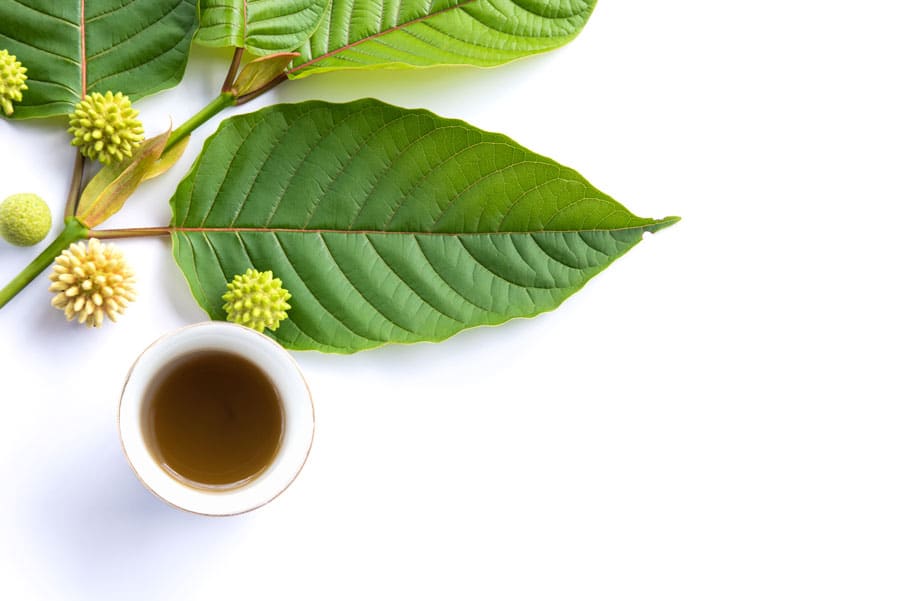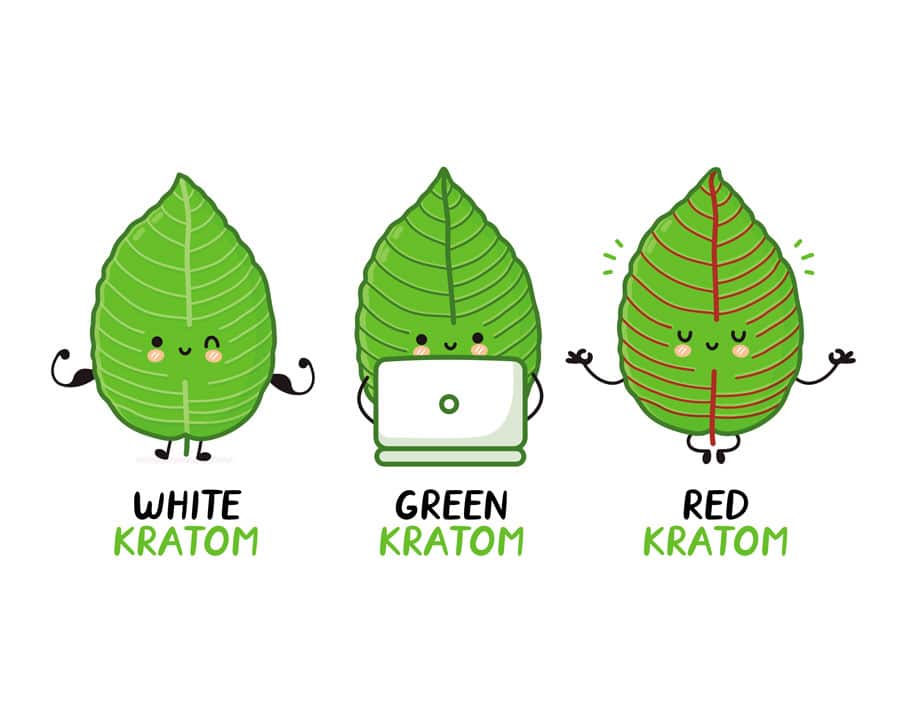
How to Use Kratom: A Comprehensive Guide for Beginners
April 8, 2023
Exploring Kratom Strains: Discover the Perfect Match for Your Needs and Lifestyle
April 9, 2023Have you ever wondered how the versatile kratom plant has been used throughout the centuries? The history of kratom is a fascinating journey, spanning diverse cultures, ancient practices, and modern innovations. In this post, we’ll explore the captivating timeline of tradition, culture, and healing that has shaped the story of this extraordinary herb. Whether you’re a curious newcomer or a seasoned enthusiast, this comprehensive overview will shed light on the rich heritage and enduring significance of kratom in today’s world. So, let’s embark on a remarkable adventure and unravel the intriguing history of kratom together!
Native Habitat and Botanical Characteristics
Kratom, known by its scientific name Mitragyna speciosa, is an evergreen tree indigenous to the tropical rainforests of Southeast Asia. Found mainly in countries such as Thailand, Malaysia, Indonesia, and Papua New Guinea, this remarkable plant flourishes in warm, moist climates with nutrient-rich soil. The tree can grow up to 80 feet tall, displaying large, shiny leaves and clusters of yellow flowers that eventually produce small, oval-shaped seeds.
Kratom leaves contain a variety of alkaloids, with mitragynine and 7-hydroxymitragynine being the most well-known. These compounds contribute to the diverse effects related to kratom consumption, which can vary from stimulating to sedating based on the specific strain and dosage.
Traditional Uses in Southeast Asia
The history of kratom dates back centuries, if not thousands, of years in Southeast Asia. Indigenous people have long recognized the plant’s unique properties and utilized it for various purposes. Kratom leaves were traditionally chewed by laborers and farmers to combat fatigue and increase productivity, while others brewed the leaves into a tea to soothe physical discomfort and alleviate stress.
Kratom was also used in traditional medicine, with the leaves often ground into a paste and applied topically to treat wounds and skin infections. In some regions, kratom was combined with other local herbs to create tonics and remedies for a range of ailments, from digestive issues to respiratory problems.
Cultural and Religious Significance
Kratom’s significance extends beyond its practical uses, as it has also played a vital role in the cultural and religious life of Southeast Asian communities. In some areas, kratom leaves were believed to possess protective and spiritual properties, with the trees often planted near homes and temples to ward off evil spirits or bring good fortune.
In certain ceremonies and rituals, kratom was used to induce a state of heightened focus and spiritual connection. Shamans and traditional healers would consume the plant to facilitate communication with ancestors or the spirit world, while others used it as a means to attain a deeper meditative state.
In summary, the origins and early uses of kratom reveal a rich tapestry of tradition and culture deeply woven into the fabric of Southeast Asian societies. From its native habitat and botanical characteristics to its various traditional applications and spiritual significance, the history of kratom offers a captivating glimpse into the enduring relationship between humans and this extraordinary plant.
Kratom’s Journey to the Western World
European Explorers and First Encounters
Kratom’s introduction to the Western world can be traced back to the age of exploration, when European adventurers journeyed to the far reaches of Southeast Asia in pursuit of new trade opportunities and resources. It wasn’t until the 19th century that kratom piqued the interest of Westerners. In 1831, Dutch botanist Pieter Willem Korthals documented the use of kratom by locals during his travels in Indonesia. Later, British explorer W. O. Ridley reported observing kratom consumption among indigenous communities in Malaysia and Thailand.
Early Scientific Research and Classification
Following these initial encounters, Western scientists began to investigate the unique properties of kratom. In 1859, British botanist George Darby Haviland officially named the plant Mitragyna speciosa, recognizing its similarities to the Rubiaceae family of plants, which includes coffee. Early research focused on identifying the plant’s active alkaloids and understanding their effects on the human body.
In 1907, chemist E. M. Holmes isolated the primary alkaloid, mitragynine, from kratom leaves, laying the groundwork for future studies into the plant’s pharmacological properties. Throughout the 20th century, scientific interest in kratom continued to grow, leading to a deeper understanding of its potential applications and effects.
The Rise of Kratom’s Popularity in the 20th Century
With the world growing more interconnected and global trade flourishing, kratom gradually made its way to Europe and the United States. By the mid-20th century, kratom had attracted a modest following among those intrigued by its potential therapeutic benefits and unique properties. The advent of the internet and online communities in the 1990s and early 2000s further boosted kratom’s popularity, as aficionados exchanged experiences and knowledge about the plant through forums and websites.
As awareness of the plant and its possible benefits increased, demand for kratom spiked in the Western world. Kratom began appearing in smoke shops, alternative medicine stores, and online retail outlets, leading to the development of a booming global market for the plant.
In conclusion, kratom’s voyage to the Western world is a captivating story of discovery, scientific exploration, and growing popularity. From the initial encounters of European adventurers to the expansion of scientific research and the plant’s emergence as a sought-after commodity, the tale of kratom’s introduction to the West underscores the continually evolving relationship between humans and this extraordinary plant.
Modern Perspectives on Kratom
The Debate Surrounding Legality and Regulation
As kratom’s popularity has grown, so too has the debate surrounding its legality and regulation. In some countries, including its native regions in Southeast Asia, kratom has been banned or restricted due to concerns about potential abuse and health risks. However, many advocates argue that the benefits of kratom far outweigh the risks and that responsible use can contribute to improved well-being.
In the United States, the legal status of kratom varies by state, with some states having imposed bans or restrictions on its sale and use. The Drug Enforcement Administration (DEA) has considered placing kratom under federal control, but ongoing public outcry and calls for further research have thus far prevented such action.
Kratom’s Role in Alternative Medicine
In recent years, kratom has piqued the interest of those seeking alternative remedies to improve their well-being. Many people have turned to the plant for its unique properties that offer both stimulating and sedating effects. This has led to kratom becoming an increasingly popular choice for those in search of natural alternatives to conventional medications.
As more individuals share their personal experiences with kratom, stories of the plant’s potential benefits in managing pain, boosting energy, and improving mood have spread. This, in turn, has attracted the attention of researchers who are keen to investigate the science behind these anecdotal claims. While research is still in its early stages, preliminary findings have shown promise in understanding the potential applications of kratom in alternative medicine.
It’s important to note that, as with any natural remedy, individual experiences may vary, and it’s crucial to approach kratom with caution and responsibility. As we continue to explore the role of kratom in alternative medicine, it’s essential to stay informed, rely on reputable sources, and prioritize personal well-being when making decisions about using this fascinating plant.
Contemporary Research and Evolving Understanding
In recent years, scientific interest in kratom has grown, with researchers delving into its pharmacology, potential benefits, and safety profile. Some studies have shown promise in using kratom for pain management and opioid withdrawal treatment, while others have focused on understanding the mechanisms behind its various effects.
Despite the expanding body of research, our understanding of kratom is still developing. Many questions remain unanswered, and further investigation is needed to fully comprehend the plant’s potential benefits and risks. As research advances, it is hoped that a clearer picture will emerge, informing future policy decisions and guiding the responsible use of kratom in society.
In conclusion, modern perspectives on kratom are diverse, covering debates on legality and regulation, the plant’s role in alternative medicine, and the continuously evolving understanding of its properties and potential uses. As the narrative of kratom continues to progress, it highlights the intricate and ever-changing relationship between humans and the natural world.
The Global Impact of Kratom
The Economic Significance of the Kratom Industry
Kratom’s rising popularity has given birth to a thriving industry that spans across the globe. From small-scale farmers in Southeast Asia to large distributors and retailers in the Western world, kratom’s economic impact is far-reaching. The cultivation, processing, and sale of kratom offer livelihoods for thousands, as the demand for the plant continues to grow in both traditional and new markets.
Beyond its economic significance, the kratom industry has also spurred innovation in processing techniques and product development. This innovation has led to the creation of a diverse array of kratom products, such as powders, capsules, extracts, and even beverages, catering to various consumer preferences and needs.
Kratom’s Influence on Art, Music, and Literature
Kratom’s impact extends beyond its economic and medicinal value, as it has also inspired creative expression in various forms. Artists, musicians, and writers have been drawn to the plant’s unique properties and cultural significance, incorporating kratom themes into their work.
In the realm of visual arts, kratom has been depicted in paintings and illustrations, often highlighting its vibrant leaves or showcasing its use in traditional ceremonies. Musicians, particularly in Southeast Asia, have composed songs and melodies that pay homage to kratom, reflecting its deep cultural roots. Writers have explored the plant’s history, effects, and role in society, contributing to both fiction and non-fiction literature centered around kratom.
Kratom’s Role in Community-Building and Advocacy Efforts
Kratom’s worldwide appeal has not only created a thriving industry but has also brought people together who share a common interest in the plant. Users and advocates from all walks of life have formed a strong sense of community, finding common ground in their appreciation for kratom’s potential benefits.
Online forums, social media groups, and even in-person events have become popular platforms for enthusiasts to exchange stories, share knowledge, and support each other on their kratom journey. These connections often extend beyond the digital realm, with people forging genuine friendships and support networks.
Moreover, the kratom community has recognized the importance of advocacy in shaping the plant’s future. Grassroots efforts, driven by passionate individuals, have emerged to promote responsible use, ensure access, and encourage further research. Organizations like the American Kratom Association (AKA) are at the forefront of these efforts, working tirelessly to protect consumer rights, challenge potential bans, and raise awareness about kratom’s potential benefits.
In conclusion, kratom has left a profound impact on society by fostering a sense of community and inspiring advocacy efforts. As the plant continues to gain attention worldwide, the unifying power of kratom will undoubtedly play a crucial role in shaping its future, legal status, and overall place in society.
The Future of Kratom
Ongoing Research and Potential Medical Applications
As curiosity about kratom continues to grow, so does the dedication to investigating its properties and potential uses. Scientists are examining the pharmacology of kratom’s active compounds and exploring possible benefits in areas like pain management, mental health, and addiction treatment. As new findings emerge, the medical community may start considering kratom as a viable treatment option for specific conditions, leading to a broader understanding of the plant’s full potential.
The Evolving Legal Landscape and Its Implications
The future of kratom will undoubtedly be influenced by the changing legal landscape. As more research emerges, policymakers and regulatory bodies will need to reassess their stance on the plant. This could lead to changes in the legal status of kratom, either tightening or loosening restrictions depending on the evidence presented. The kratom community, including advocates and users, will play a vital role in shaping this landscape by raising awareness, promoting responsible use, and supporting further research.
Kratom’s Role in the Wellness Movement and Holistic Health
The growing emphasis on wellness and holistic health has paved the way for kratom to make its mark in the world of natural remedies. As more people seek alternative treatments to improve their well-being, kratom’s popularity is likely to rise in tandem. The plant’s unique properties, offering both stimulating and sedating effects, make it an attractive option for those seeking natural alternatives to conventional medications.
The future of kratom will be shaped by how effectively it can be integrated into the wellness movement, with a focus on responsible use and accurate information dissemination. As kratom continues to gain traction, it has the potential to become a staple in the holistic health toolkit for those seeking a natural, plant-based approach to well-being.
In conclusion, the future of kratom is filled with possibilities as ongoing research, the evolving legal landscape, and its integration into the wellness movement all contribute to the plant’s ever-changing story. As we continue to learn more about kratom and its potential applications, its role in society is likely to shift and expand, reflecting our growing understanding of this fascinating plant.
Reflecting on Kratom’s Rich History and Embracing Its Future
In this blog post, we’ve taken an enthralling journey through kratom’s history, a narrative that stretches across time and transcends cultural boundaries. We’ve delved into its origins and early uses in Southeast Asia, followed its passage to the Western world, and witnessed its influence on both ancient and modern societies. Today, ongoing conversations about its legal status, role in alternative medicine, and the latest research all contribute to our ever-changing understanding of this extraordinary plant.
As we’ve explored kratom’s global impact, we’ve seen how it has stimulated economic growth, inspired creative expression, and nurtured a sense of community and advocacy among those who appreciate its potential benefits. Moving forward, ongoing research, evolving legal landscapes, and kratom’s growing role in the wellness movement will certainly play a vital role in shaping the plant’s future.
Kratom’s history showcases its adaptability and multifaceted nature, captivating the curiosity and enthusiasm of those who discover it. As we keep uncovering more about its potential uses and benefits, it’s important to approach the subject with an open mind and a genuine interest in understanding the intricacies that make this plant so enthralling.
In conclusion, we encourage you to continue venturing into the mesmerizing world of kratom. By engaging in new discoveries and discussions, we can contribute to a deeper understanding and appreciation of this remarkable plant, ensuring that its captivating history carries on for generations to come.






